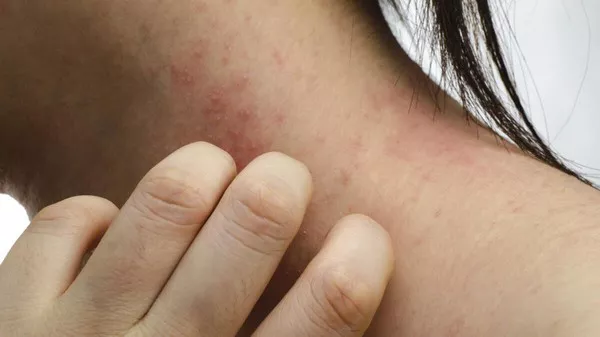Shingles, caused by the varicella-zoster virus—the same virus responsible for chickenpox—can be a painful and debilitating condition. While anyone who has had chickenpox can develop shingles, certain factors increase the risk. Fortunately, there are steps individuals can take to reduce their chances of experiencing this painful condition. By understanding the causes, risk factors, and prevention strategies, individuals can take proactive measures to safeguard their health and well-being.
Understanding Shingles
Shingles, also known as herpes zoster, typically manifests as a painful rash that develops on one side of the body or face. The rash is characterized by fluid-filled blisters that eventually crust over and heal within a few weeks. Alongside the rash, individuals may experience symptoms such as itching, burning, tingling sensations, and general discomfort. In severe cases, shingles can lead to complications such as postherpetic neuralgia, a persistent nerve pain that can last for months or even years after the rash has healed.
The varicella-zoster virus remains dormant in nerve tissue following a chickenpox infection. It can reactivate years later, causing shingles. While the exact triggers for reactivation are not fully understood, factors such as age, weakened immune system, stress, and certain medical conditions can increase the risk.
Risk Factors for Shingles
Several factors influence an individual’s susceptibility to shingles:
1. Age: Shingles is more common in older adults, with the risk increasing significantly after the age of 50. The decline in immune function that accompanies aging plays a role in this heightened risk.
2. Weakened Immune System: Conditions or medications that weaken the immune system, such as HIV/AIDS, cancer treatments (chemotherapy or radiation therapy), and immunosuppressive drugs (used in organ transplant recipients), can increase the risk of shingles.
3. Stress: Psychological stress or emotional trauma can weaken the immune system, making it easier for the varicella-zoster virus to reactivate.
4. Health Conditions: Certain medical conditions, such as autoimmune diseases (e.g., rheumatoid arthritis, lupus), may increase the risk of shingles due to their impact on immune function.
5. Previous Chickenpox Infection: Individuals who have had chickenpox are at risk of developing shingles later in life, as the varicella-zoster virus remains dormant in the body’s nerve cells.
6. Close Contact with Shingles Patients: Direct contact with the fluid from shingles blisters can transmit the virus to individuals who have not had chickenpox, potentially leading to chickenpox rather than shingles.
Preventive Measures for Shingles
While it may not be possible to completely eliminate the risk of shingles, several preventive measures can significantly reduce the likelihood of developing the condition:
1. Vaccination: The most effective way to prevent shingles is through vaccination. The shingles vaccine, also known as the herpes zoster vaccine, is recommended for adults aged 50 and older, even if they have had shingles before. There are two shingles vaccines available: Shingrix and Zostavax. Shingrix, a recombinant zoster vaccine, is the preferred choice due to its higher efficacy and longer-lasting protection.
2. Maintaining a Healthy Immune System: A strong immune system is essential for fighting off infections, including the varicella-zoster virus. Practices such as regular exercise, adequate sleep, a balanced diet rich in fruits, vegetables, and whole grains, and stress management techniques can help bolster immune function.
3. Avoiding Close Contact with Shingles Patients: Individuals with active shingles should avoid close contact with individuals who have not had chickenpox or who have weakened immune systems, as they are at risk of contracting the virus.
4. Stress Management: Engaging in stress-reducing activities such as meditation, yoga, deep breathing exercises, and spending time with loved ones can help lower stress levels and reduce the risk of shingles reactivation.
5. Good Hygiene Practices: Practicing good hygiene, such as regularly washing hands with soap and water, can help prevent the spread of the varicella-zoster virus.
6. Prompt Treatment of Chickenpox: If you or your child develops chickenpox, it is essential to seek prompt medical attention and follow the prescribed treatment regimen to minimize the risk of complications and reduce the likelihood of shingles later in life.
7. Consultation with Healthcare Providers: Individuals with underlying health conditions or those who are immunocompromised should consult their healthcare providers for personalized recommendations on shingles prevention strategies.
Conclusion
Shingles can cause significant discomfort and distress, particularly in older adults and individuals with weakened immune systems. While the risk of developing shingles cannot be completely eliminated, proactive measures such as vaccination, maintaining a healthy lifestyle, stress management, and good hygiene practices can significantly reduce the likelihood of experiencing this painful condition. By prioritizing preventive care and seeking appropriate medical advice, individuals can take control of their health and well-being, minimizing the impact of shingles on their lives.


























